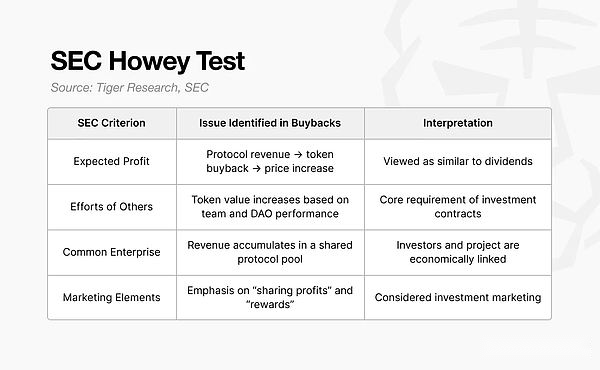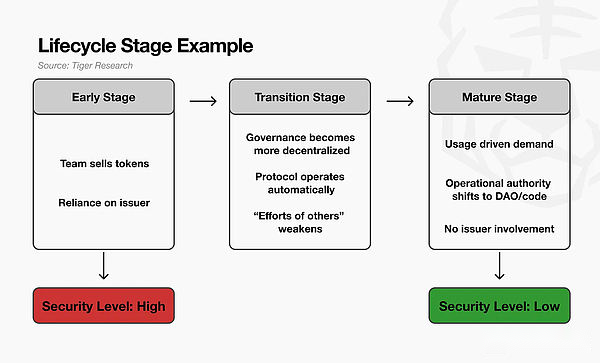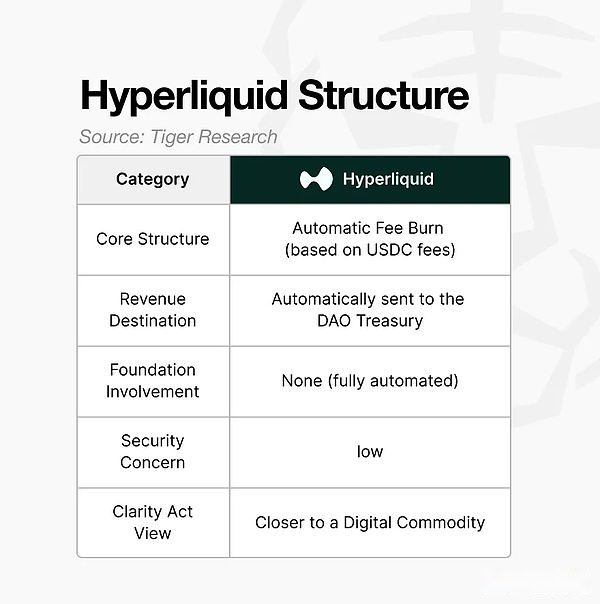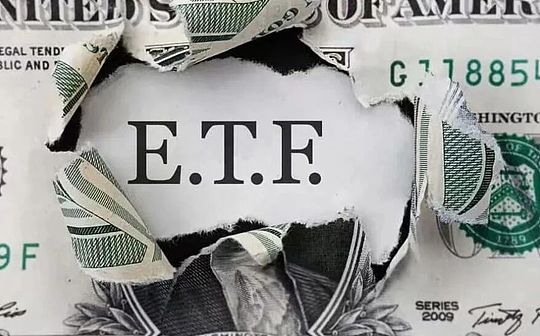
Author: Ekko an, Ryan Yoon, Elsa, Source: Tiger Research
Summary of key points
-
Hyperliquid’s 99% buyback and Uniswap’s resumption of buyback discussions have brought buybacks back into focus.
-
Once considered unfeasible, buybacks are now possible thanks to the SEC’s “Project Crypto” and the Clarity Act.
-
However, not all buyback structures are feasible, confirming that the core requirement of decentralization remains crucial.
1. Buybacks make a comeback after three years
Buybacks, which disappeared from the crypto market after 2022, reappeared in 2025.
In 2022, the U.S. Securities and Exchange Commission will treat repurchases as an activity subject to securities regulation.When a protocol uses its revenue to buy back its own tokens, the SEC considers this to be providing a financial benefit to token holders, essentially equivalent to a dividend.Because dividend distributions are a core feature of securities, any token that undergoes a buyback may be classified as a security.
As a result, major projects like Uniswap have either postponed their buyback plans or stopped discussions altogether.There is no reason to take direct regulatory risk.
However, by 2025, the situation has changed.
Uniswap has reopened its buyback discussions, and several protocols, including Hyperliquid and Pump.fun, have implemented buyback plans.What was considered unfeasible a few years ago has now become a trend.So, what has changed?
This report explores why buybacks were halted, how regulations and structural models have evolved, and how each protocol’s approach to buybacks differs today.
2. Why buybacks disappeared: SEC’s securities explanation
The disappearance of buybacks is directly related to the SEC’s view of securities.From 2021 to 2024, regulatory uncertainty is unusually high across the crypto space.
The Howey test is the framework the SEC uses to determine whether an action constitutes a security.It contains four elements, and assets that meet all elements qualify as investment contracts.
Based on this test, the SEC has repeatedly claimed that many crypto-assets fall within the scope of investment contracts.Buybacks are also explained under the same logic.As regulatory pressure increases across the market, most protocols have no choice but to abandon plans to implement buybacks.

The SEC does not consider buybacks to be simply token economic mechanisms.In most models, the protocol uses its revenue to buy back tokens and then distributes the value to token holders or ecosystem contributors.In the SEC’s view, this is similar to a dividend or shareholder distribution following a company buyback.
As the four elements of the Howey test fit this structure, the “repurchase = investment contract” interpretation became increasingly entrenched.This pressure is most acute for large U.S. deals.
Both Uniswap and Compound, which are run by U.S.-based teams, have come under direct regulatory scrutiny.Therefore, they must be highly cautious when designing token economics and any form of income distribution.For example, Uniswap’s fee switch has been inactive after 2021.
Due to regulatory risks, major protocols avoid any mechanism that directly distributes income to token holders or could have a material impact on token prices.Terms such as “price appreciation” or “profit sharing” were also removed from public communications and marketing.
3. SEC’s Changing View: Crypto Projects
Technically speaking, the SEC did not “approve” buybacks in 2025.What has changed is its interpretation of what constitutes a security.
-
Gensler: Based on results and behavior(How are tokens sold? Does the foundation distribute value directly?)
-
Atkins: based on structure and control(Is the system decentralized? Who actually controls it?)
Under Gensler in 2022, the SEC will emphasize results and conduct.If revenue is shared, the token tends to be treated as a security.It is also considered a security if the foundation intervenes in a way that affects the price.
By 2025, under Atkins, the framework shifted toward structure and control.The focus shifts to who governs the system and whether operations rely on human decision-making or automated code.In short, the SEC is starting to assess the actual degree of decentralization.

Source: U.S. District Court for the Southern District of New York
The Ripple (XRP) lawsuit sets a key precedent.
In 2023, a court ruled that XRP sold to institutional investors qualified as a security, while XRP traded on exchanges by retail investors did not.The same token may fall into different classifications depending on how it is sold.This reinforces the interpretation that security status does not depend on the token itself, but rather on the sales method and operating structure, a view that directly impacts how buyback models are evaluated.
These shifts were later consolidated under an initiative called Project Crypto.After “Project Crypto,” the SEC’s core questions changed:
Who actually controls the network?Are decisions made by the foundation or DAO governance?Are revenue distribution and token burning manually timed, or are they performed automatically by code?
In other words, the SEC is starting to look at substantive decentralization rather than surface structure.Two shifts in perspective become particularly critical.
-
life cycle
-
Functional decentralization
3.1. Life cycle
The first shift is the introduction of a token lifecycle perspective.
The SEC no longer considers tokens to be perpetual securities or perpetual non-securities.Rather, it recognizes that the legal characteristics of a token may change over time.

For example, in the early stages of a project, the team sells tokens to raise funds, and investors buy tokens in the expectation that the team’s strong execution will increase the token value.At this point, the structure relies heavily on a team effort, making the sale functionally similar to a traditional investment contract.
As the network started to see real usage, governance became more decentralized, and the protocol ran reliably without direct intervention from the team, the interpretation changed.Price formation and system operation no longer depend on the team’s ability or continued work.A key element in the SEC’s assessment—“reliance on the efforts of others”—is weakened.The SEC describes this period as a transitional phase.
Eventually, when the network enters a mature stage, the characteristics of the token are significantly different compared to its early stages.Demand is driven more by actual usage than speculation, and the token functions more like an online commodity.At this point, applying traditional securities logic becomes difficult.
In short, the SEC’s life cycle perspective recognizes that tokens may resemble investment contracts in their early stages, but as networks become decentralized and self-sustaining, it becomes more difficult to classify them as securities.
3.2. Functional decentralization
The second is functional decentralization.This perspective focuses not on how many nodes exist, but on who actually has control.
For example, a protocol might run ten thousand nodes around the world, with its DAO tokens distributed among tens of thousands of holders.On the surface, it appears to be completely decentralized.
However, if upgrade permissions for a smart contract are held by a three-person foundation’s multi-signature wallet, if the vault is controlled by the foundation wallet, and if fee parameters can be changed directly by the foundation, then the SEC does not consider this to be decentralized.In effect, the Foundation controls the entire system.
In contrast, even if a network is run by only a hundred nodes, the SEC may consider it more decentralized if all major decisions require DAO votes, if the results are automated by code, and if the foundation cannot intervene at will.
4. Clarity Act

Another factor that could allow buyback discussions to resurface in 2025 is the Clarity Act, a legislative initiative in the U.S. Congress.The bill seeks to redefine how tokens should be legally classified.
While the SEC’s “Project Crypto” focuses on determining which tokens qualify as securities, the CLARITY Act raises a more fundamental question: What is a token as a legal asset?
The core principle is simple: a token does not permanently become a security simply because it is sold under an investment contract.This concept is similar to the SEC’s lifecycle approach, but is applied differently.
Under previous SEC interpretations, if a token is sold as part of an ICO investment contract, the token itself may be considered a security indefinitely.
The Clarity Act separates these elements.If a token is sold under an investment contract at the time of issuance, it is considered an “investment contract asset” at that moment.But once it enters the secondary market and is traded by retail users, it is reclassified as a “digital good.”
Simply put, a token may be a security when issued, but once it is fully distributed and actively traded, it becomes a regular digital asset.
This classification is important because it changes regulatory agencies.Initial sales fall under the regulatory purview of the SEC, while secondary market activities fall under the regulatory purview of the CFTC.As regulation shifts, protocols face fewer constraints related to securities regulation in designing their economic structures.
This shift has a direct impact on how buybacks are interpreted.If a token is classified as a digital commodity in the secondary market, then buybacks are no longer considered “security-like dividends.”Instead, it can be interpreted as supply management, similar to monetary policy in a commodity-based system.It becomes a mechanism for operating a token economy rather than distributing profits to investors.
Ultimately, the Clarity Act formalizes the idea that a token’s legal characteristics may change situationally, which reduces the structural regulatory burden associated with buyback designs.
5. Switch to repurchase and destroy
In 2025, the combination of repurchase and automatic destruction mechanism will reappear.In this model, revenue is not distributed directly to token holders, the foundation has no control over price or supply, and the burning process is performed algorithmically.The structure therefore moves further away from elements previously flagged by regulators.

Uniswap’s “Unification Proposal” announced in November 2025 clearly illustrates this shift.
In this model, a portion of transaction fees are automatically allocated to the DAO treasury, but no revenue is distributed directly to UNI holders.Instead, a smart contract purchases UNI on the open market and burns it, thereby reducing supply and indirectly supporting value.All decisions governing this process are made through DAO voting, with no intervention from the Uniswap Foundation.
The key change is in how the behavior is interpreted.
Early buybacks were seen as a form of “profit distribution” to investors.The 2025 model redefines the mechanism as a supply adjustment, operating as part of network policy rather than intentionally affecting prices.
This structure does not conflict with the SEC’s 2022 Views and is consistent with the “digital commodity” classification as defined in the CLARITY Act.Once a token is treated as a commodity rather than a security, adjusting supply becomes akin to a monetary policy tool rather than a dividend-like payment.
In its proposal, the Uniswap Foundation said that “this environment has changed” and that “regulatory clarity is evolving in the United States.”The key insight here is that regulators did not explicitly authorize buybacks.Instead, clearer regulatory boundaries enable protocols to design models that meet compliance expectations.
In the past, any form of buyback was seen as a regulatory risk.By 2025, the question shifts from “whether buybacks are allowed” to “can they be designed to avoid raising securities concerns?”
This shift opens up space for protocols to implement buybacks within a compliance framework.
6. Agreement to implement repurchase
The representative protocol that implements the buyback and destruction mechanism in 2025 is Hyperliquid.Its structure illustrates several defining characteristics:
-
Automation mechanism: Buyback and destruction operate based on protocol rules rather than at the Foundation’s discretion.
-
Non-Foundation Income Streams: Revenue does not flow into a wallet controlled by the Foundation, or even if it does, the Foundation cannot use it to influence the price.
-
No direct cost to share: Income is not paid to token holders.It is only used for supply adjustments or network operating costs.
Crucially, the model no longer promises direct economic benefits to token holders.It functions as a provisioning policy for the network.The mechanism is redesigned to fit within the boundaries that regulators are willing to accept.

However, this does not mean that all repos are safe.
While buybacks have regained momentum, not every implementation carries the same regulatory risks.The regulatory shift in 2025 is to open the door to structurally compliant buybacks rather than discretionary, one-time or foundation-driven programs.
The SEC’s logic remains the same:
-
If the fund determines the timing of market purchases, it strengthens the “intentional support of price” interpretation.
-
Even with DAO voting, if upgrade or execution rights end up in the hands of the foundation, it does not meet the decentralization requirements.
-
Similar to a dividend if value accumulates to specific holders rather than being destroyed.
-
If income flows from the foundation to market purchases, which then lead to price appreciation, this will reinforce investor expectations and is consistent with elements of the Howey test.
In short, discretionary, incidental, or foundation-controlled repurchases still cannot escape securities scrutiny.
It’s also important to note that buybacks do not guarantee price appreciation.Burning reduces supply, but it is only a long-term token economic mechanism.Burning cannot make a weak project stronger; on the contrary, a strong project can strengthen its fundamentals through a well-designed burning system.





